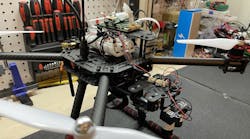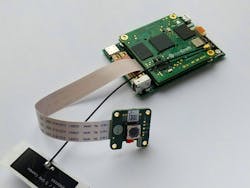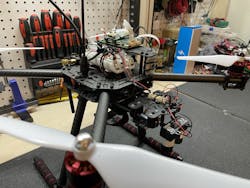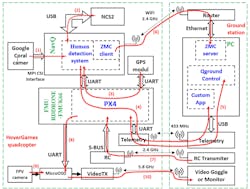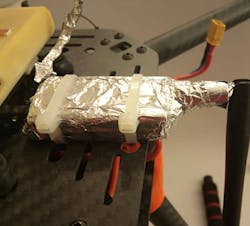NXP’s HoverGames 2 was an interesting drone competition because of its approach and scope. Many robot competitions pit teams against each other by trying to outperform each other in specific tasks or going head-to-head, which tends to make a mess when dealing with flying objects.
The task for HoverGames 2 participants was to enhance the capabilities of the drone platform from the initial HoverGame competition. Building a quadcopter from the kit is a trivial exercise that even a five-year-old can do, or at least help with. Programming the drone to do something useful is much harder. As they say at the Olympics, it’s not as easy as it looks.
HoverGames 2 also took a collaborative approach so that teams could share their drone and provide feedback to each other. The scoring took into account the interaction with other teams. Given my background in science and robotics competitions, I can tell you that this is now easy task from an implementation and judging aspect.
In addition to the kit available for the first HoverGames, this round added the NavQ mission computer (Fig. 1). The NavQ is a multiple board stack that includes an NXP i.MX 8M Mini SOM with LPDDR4 DRAM and eMMC flash. Another board adds an SD card, wireless networking support, and MIPI-CSI camera and MIPI-DSI display interfaces with a MIPI-DSI-to-HDMI converter. There’s also an interposer board to merge the two peripheral boards. A Google Coral camera module rounds out the combination.
The NavQ communicates with the RDDRONE-FMUK66. This system runs PX4 autopilot software. Many of the projects from the prior year ran applications on this platform in addition to the autopilot software. The NavQ incorporated a powerful host to make complex autonomous operations practical.
The projects from the winners of this year’s competition are impressive. The top award went to Team SCAREcrow, which has an aerial reconnaissance and escort drone (Fig. 2). The drone is designed to wait on the ground to watch for intruders. This might be a farm field where we want to keep out animals. The drone would then launch and chase away the animal. In theory, a future implementation with multiple drones could cover more area. The system also uses ground-station-based support for analyzing images from the drone.
The second spot when to Dobrea Dan Marius with a hoverdrone designed to support quarantine zones by detecting movement (Fig. 3). The drone autonomously executes out a pre-programmed flight path around the quarantine zone. The drone sends details to a ground station if it detects movement in the area.
One interesting part of the solution was a homemade Faraday cage around the drone’s control link so that there was less interference with the GPS system (Fig. 4). It worked rather well.
Fabian Pichardo’s Drone for Mental Health Rescue also targets tracking people during the COVID-19 pandemic. The idea is similar to Dobrea’s project in that the drone flies around and observes its surroundings. The idea is that this information is shared with people in the area so they can make decisions about their movement based on the density of people who are already there.
The details for all of the projects are on the hackster.io website. They are well worth reading as the details provide more insight into the projects and their implementation. Here's a video chronicling the winners:
